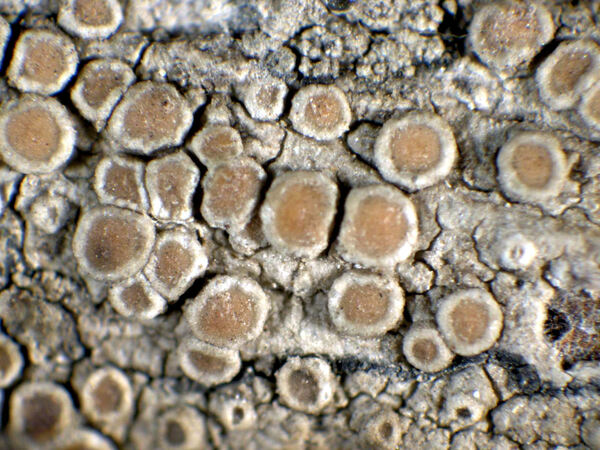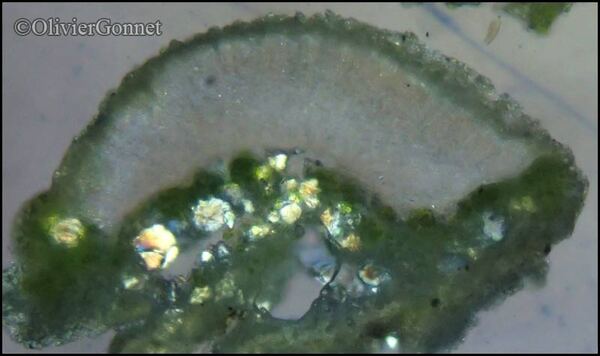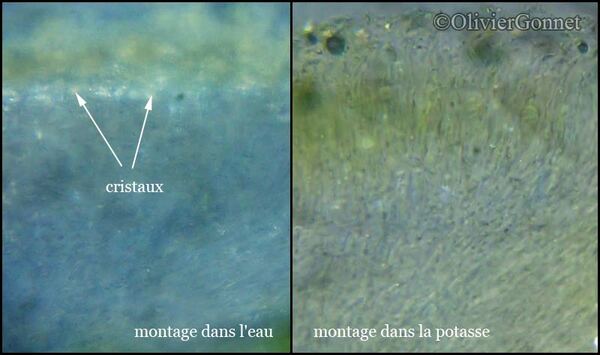Lecanora lividocinerea Bagl.
N. Giorn. Bot. Ital., 11: 75, 1879.
Synonyms: Lecanora balearica A. Crespo & Llimona; Lecanora erubescens Werner
Distribution: C - Tosc (Loppi & al. 1999a, Putortì & Loppi 1999, Benesperi & al. 2013), Laz (Gigante & Petriccione 1995), Sar (Brodo & Elix 1993, Lumbsch 1994, Zedda 2002, 2002b). S - Camp (Catalano & al. 2012), Pugl (Nimis & Tretiach 1999), Si (Ottonello & al. 2011).
Description: Thallus crustose, episubstratic, glaucous white to pale ochre, granulose-verrucose, continuous to finely rimose, usually poorly delimited, sometimes with a whitish prothallus. Apothecia lecanorine, abundant, often crowded and deformed by mutual compression, 0.4-0.8(-1.2) mm across, at first immersed in thalline warts, then sessile, with a flesh-coloured, olivaceous grey to finally brown-black, epruinose, mostly flat disc and a persistent, prominent, crenulate-granulose thalline margin. Thalline exciple with a few large crystals insoluble in K, visible under polarized light; proper exciple colourless, without crystals, 10-15 µm wide; epithecium pale to dark brown, sometimes with an olivaceous tinge, with many small crystals (chlarotera-type); hymenium colourless, 55-75 µm high, I+ blue; paraphyses sparingly branched, coherent, c. 1.5 µm thick at mid-level, the apical cells up to 2 µm wide; hypothecium colourless or yellowish, 35-50 µm high. Asci 8-spored, clavate to subcylindrical, very thin-walled, with a K/I+ blue, tall tholus penetrated by a faintly amyloid apical cushion, the wall K/I-, surrounded by a blue outer layer, Lecanora-type. Ascospores 1-celled, hyaline, ellipsoid to broadly fusiform, straight or rarely slightly curved, 10-13.5 x 4-7 µm, often guttulate, with a 0.5-1 µm thick wall. Photobiont chlorococcoid. Spot tests: thallus K+ yellow, C+ carmine red, KC+ fleeting red, P+ yellow-orange. Chemistry: atranorin, chloroatranorin, 3,5-dichloro-20-O-methylanziaic acid, 3,5-dichloro-20-O-methylnorstenosporic acid, 5-chloro-20-O-methylanziaic acid, 3,5-dichloro-20-O-methylnorhyperlatolic acid.Note: a Mediterranean lichen found on branches of shrubs in littoral maquis subject to humid maritime winds; mainly Tyrrhenian in Italy. It is included in the Italian red list of epiphytic lichens as “Vulnerable” (Nascimbene & al. 2013c). For the chemistry see Elix & al. (1997)-
Growth form: Crustose
Substrata: bark
Photobiont: green algae other than Trentepohlia
Reproductive strategy: mainly sexual
Most common in areas with a humid-warm climate (e.g. most of Tyrrenian Italy)
Commonnes-rarity: (info)
Alpine belt: absent
Subalpine belt: absent
Oromediterranean belt: absent
Montane belt: absent
Submediterranean belt: absent
Padanian area: absent
Humid submediterranean belt: absent
Humid mediterranean belt: very rare
Dry mediterranean belt: extremely rare
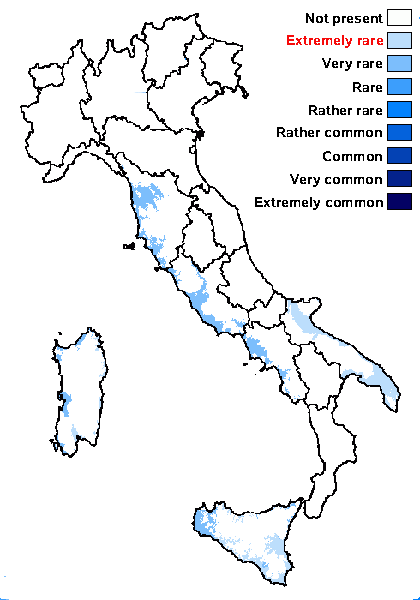
Predictive model
Herbarium samples
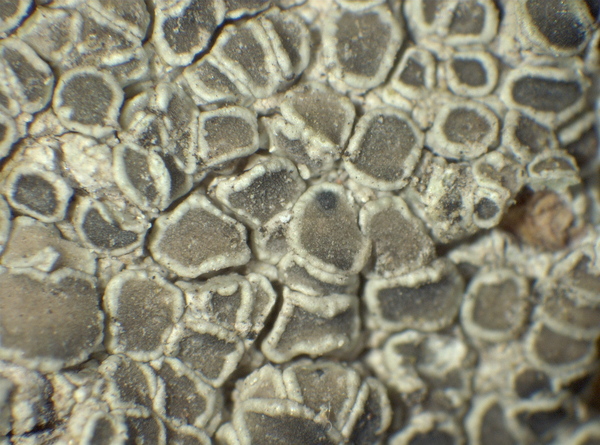

P.L.Nimis; Owner: Department of Life Sciences, University of Trieste
Herbarium: TSB (38270)
2008.02.25


P.L.Nimis; Owner: Department of Life Sciences, University of Trieste
Herbarium: TSB (38270)
2008.02.25
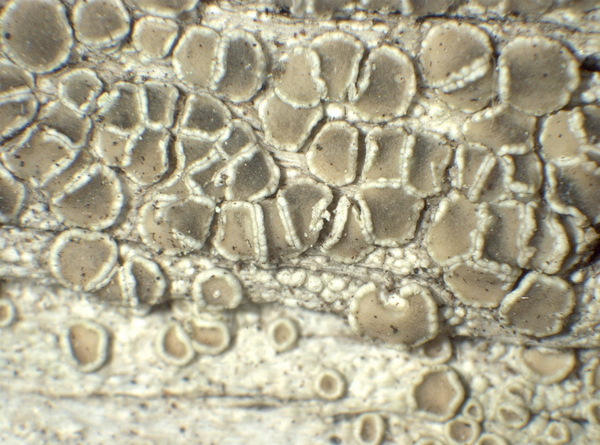

P.L.Nimis; Owner: Department of Life Sciences, University of Trieste
Herbarium: TSB (38269)
2008.02.25
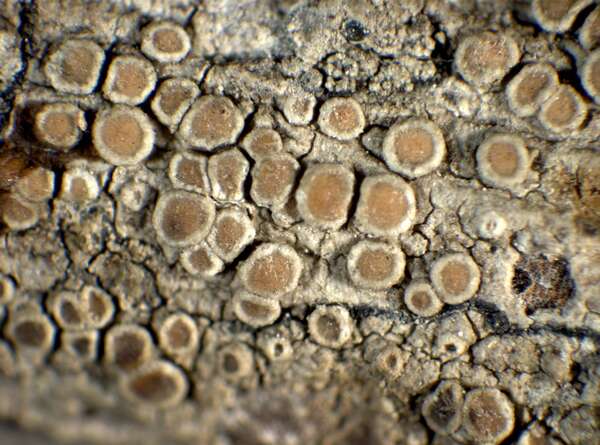

P.L. Nimis; Owner: Department of Life Sciences, University of Trieste
Herbarium: TSB (11113)
2001/11/25
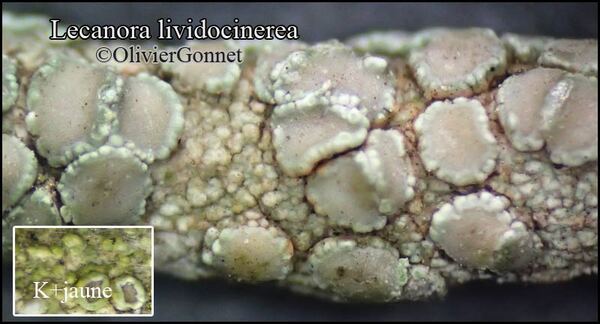
Courtesy Danièle et Olivier Gonnet - Source: https://www.afl-lichenologie.fr/Photos_AFL/Photos_AFL_L/Texte_L_3/Lecanora_lividocinerea.htm
France, oct. 2015 - sur Arbutus unedo - Madonetta - Corse
Growth form: Crustose
Substrata: bark
Photobiont: green algae other than Trentepohlia
Reproductive strategy: mainly sexual
Most common in areas with a humid-warm climate (e.g. most of Tyrrenian Italy)
Commonnes-rarity: (info)
Alpine belt: absent
Subalpine belt: absent
Oromediterranean belt: absent
Montane belt: absent
Submediterranean belt: absent
Padanian area: absent
Humid submediterranean belt: absent
Humid mediterranean belt: very rare
Dry mediterranean belt: extremely rare

Predictive model
| Herbarium samples |


P.L.Nimis; Owner: Department of Life Sciences, University of Trieste
Herbarium: TSB (38270)
2008.02.25


P.L.Nimis; Owner: Department of Life Sciences, University of Trieste
Herbarium: TSB (38270)
2008.02.25


P.L.Nimis; Owner: Department of Life Sciences, University of Trieste
Herbarium: TSB (38269)
2008.02.25


P.L. Nimis; Owner: Department of Life Sciences, University of Trieste
Herbarium: TSB (11113)
2001/11/25

 INDEX FUNGORUM
INDEX FUNGORUM
 GBIF
GBIF
